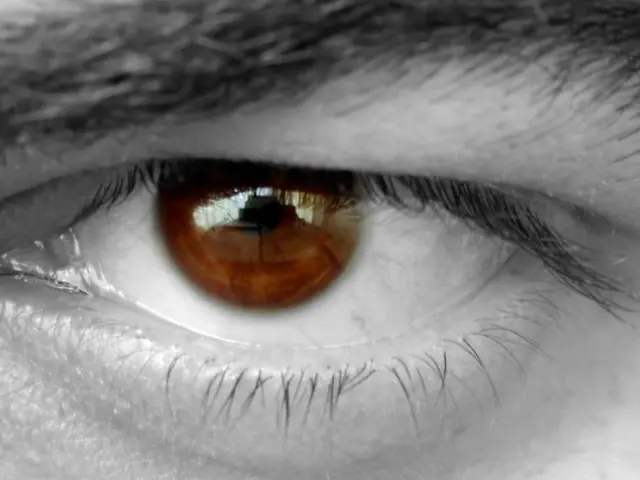Navigating the Darkside: Techniques for Enhanced Night-Time Object Observation
Discovering dim objects in the night sky can be a hassle, but employing a technique known as averted vision can lend a hand! This clever method involves gazing slightly to the side of the object you're trying to see, rather than directly at it. And the reason behind this strange strategy? It takes advantage of the arrangement of light-sensing cells within your retina.
When it comes to the retina, there are two types of photoreceptor cells: rods and cones. The cones cluster in the center (the fovea), responsible for full-color vision and sharp details, but they're less effective in low-light conditions. Rods, however, are more sensitive in dim light and motion and are predominant around the periphery, outside the fovea.
When you aim to see a faint celestial body head-on, the image lands on the fovea littered with cones, making the object harder to detect. By giving averted vision a go – looking slightly to the object's side – the light from the faint object is instead projected onto the rod-rich part of the retina, boosting its visibility. This helps stargazers and astronomers catch sight of objects that might otherwise go unnoticed [4, 5].
To put it succinctly, averted vision enhances night sky exploration by capitalizing on the increased sensitivity of rod cells in the peripheral retina instead of relying on the central cone-rich area. This technique makes faint celestial objects more perceptible, making your star-gazing sessions more productive and enjoyable!
Here's a neat trick to practice: Try to make out the Blinking Planetary Nebula (NGC 6826) located in Cygnus, which is almost overhead at midnight GMT in mid-July. It's about 5° north of delta Cygni and 0.5° east of a distinctive pair of 6th magnitude stars. In a bid to get the best results with averted vision, locate the object in your telescope and gaze slightly to the side – you'll be amazed by what you can see!
- Employing the technique of averted vision in your astronomy sessions can help you spot dim objects in the night sky more easily, as it takes advantage of the increased sensitivity of rod cells in the peripheral retina.
- Stargazing becomes more productive and enjoyable using averted vision, as it boosts the visibility of faint celestial objects that might otherwise go unnoticed, like the Blinking Planetary Nebula located in Cygnus.
- By looking slightly to the side of the object you're trying to see, instead of directly at it, you can make the most of this strange yet effective strategy of averted vision in your night sky exploration.
- Averted vision can be particularly beneficial when it comes to astrophotography, as it can help capture fainter celestial objects more clearly with the help of planetarium software.
- Health-and-wellness enthusiasts can reap the rewards of stargazing with averted vision, as it promotes mental relaxation and stress relief while offering a fun and educational experience in the field of science.
- Engaging in fitness-and-exercise activities, like going for a walk under the night sky, can enhance your averted vision practice, as improved physical health contributes to better overall eye health, and nutrition plays a crucial role in maintaining good vision for stargazing sessions.








